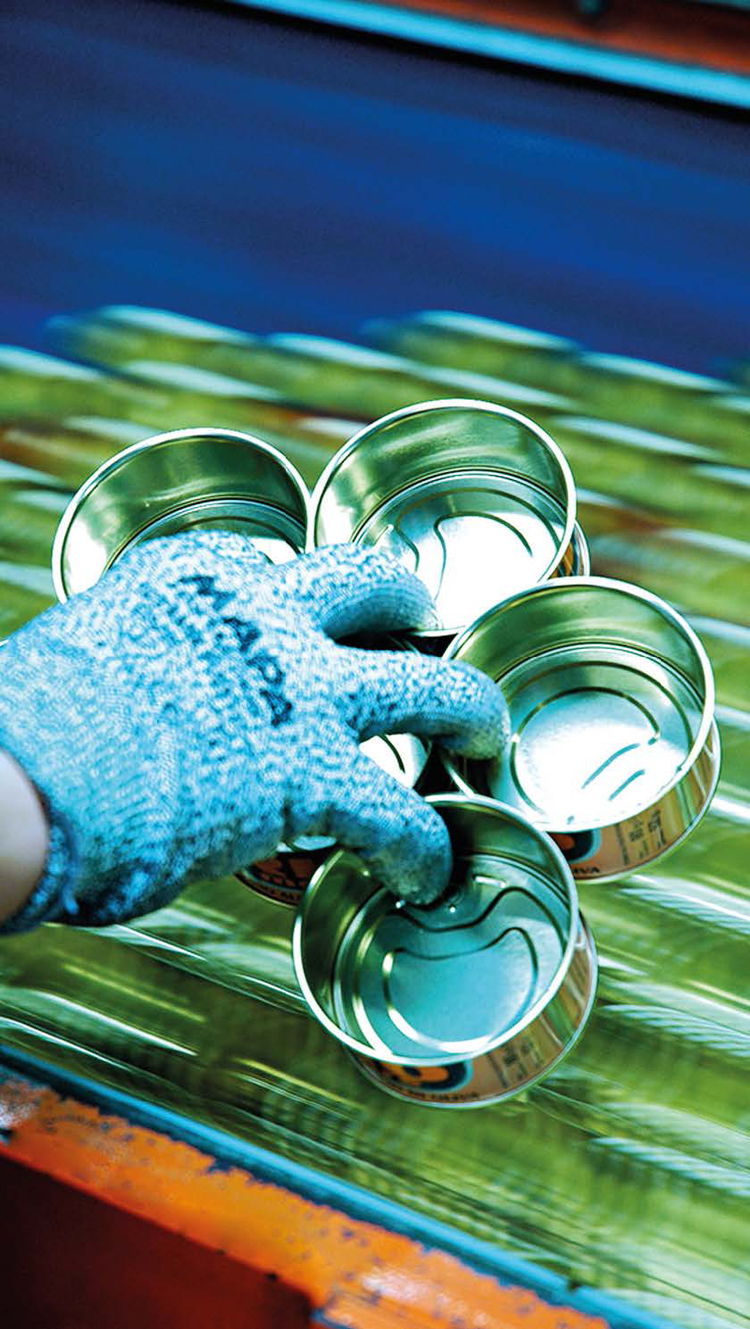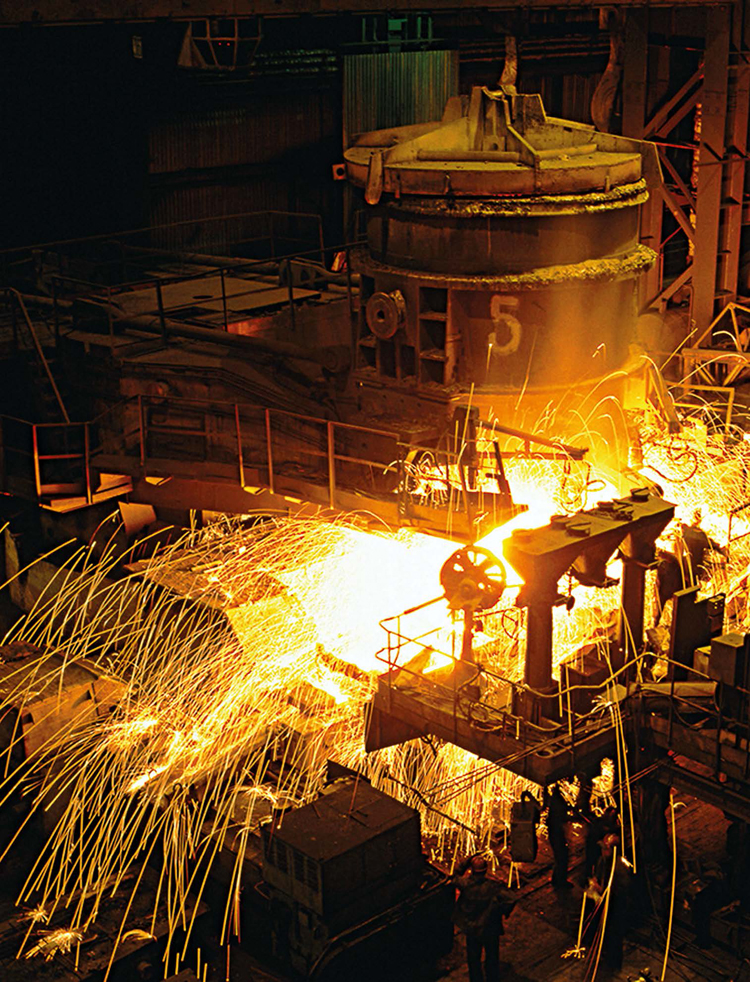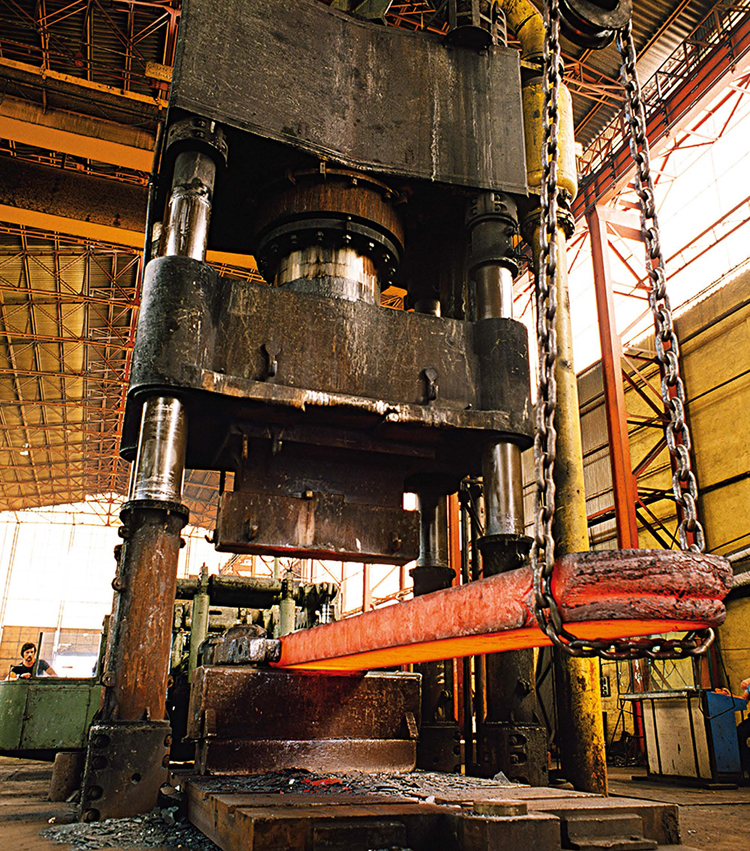When Jared Diamond wrote his essay Guns, Germs and Steel. A Brief History of Everybody for the Last 13,000 Years purported to show a picture of the history of mankind from an ecological rather than an exclusively cultural viewpoint. His work – which later was awarded a Pulitzer Prize – focused on a question: why did the civilizations that developed along the Fertile Crescent somehow conquer the rest of the planet? A series of environmental advantages in the history of humankind allowed those civilizations to develop advanced war techniques and technologies, to select resistance to diseases that at a later stage would exterminate, for instance, populations in the Americas and above all to establish a system of cultural exchanges that helped the development of the iron and steel industry.

Steel, therefore, as a crucial discovery or invention for humanity.
Today, according to preliminary data for 2015, 1,623 million tonnes of steel per year are produced. A little less compared to the previous year (in 2014 it was 1,670 million, 3% more), a huge quantity nonetheless.
In Europe, where the production dropped from 313 million tonnes to 304 million, according to RICREA’s Report data – “Italy’s national consortium for steel packaging, recycling and recovery” – Italy is the second producer, after Germany, with 22 million tonnes, 13% of EU28’s overall production.
“Steel is the world’s most recycled packaging material: it is a permanent material that can be reused an infinite number of times without compromising its quality,” explains Domenico Rinaldini, RICREA’s President. “Once used, cans, drums and tops are collected, recycled and reintroduced in the production cycle to manufacture new products: a perfect example of circular economy.”
After all, already one year ago, Eurofer’s Director General Axel Eggert, had enthusiastically hailed the EU “Circular Economy Package” publication, conferring steel a very important role.
“Steel – Eggert said – is 100% recyclable. It is a permanent material and this is precisely what underpins the circular economy.” The “Circular Economy Package” meant a step forward in bestowing a new status to industrially co-generated products and above all, in encouraging the use of durable goods.
Today, being able to say that steel is a permanent material is a major conceptual as well as commercial leap forward.
Steel Packaging... Hello Stranger!
Tins, cans, canisters, caps, capsules, drums and cylinders: steel packaging comes in a variety of ways. All of them are 100% ad infinitum recyclable. Waste from steel packaging belongs to the big world of secondary raw materials made of scrap iron although in a small percentage (about 3%). But it is an important share nonetheless, since in Italy, the availability of scrap to meet steel plants and smelters’ needs is decisively scanty, which demands considerable imports (from 25 to 30%) both from Europe and overseas.
Indeed, the types of aluminium packaging we see on a daily basis are countless.
Open top
Steel packaging (with a maximum capacity of 5 kilo) generally used for food products: from tuna to fruit in syrup, from coffee to peeled plum tomatoes. Over the last few years, this sector has enjoyed most of the technological development, together with refreshment cans.
General Line
Steel containers (with a maximum capacity of 40 kilo) used both in the food industry (for instance for oil) and in the chemical sector (for paints, inks, varnishes, mastic, lubricants, etc.). They are cylindrical or rectangular cans but also drums or kegs.
Miscellaneous
Containers often used for gift items: for sweets, liqueurs and fragrances. They come in all shapes and sizes; they can be decorated with lithographs.
Drums and Aerosols
Large drums made of sheet steel with a maximum capacity of 250 litres. Once used mainly in the oil and chemical industries, they are now widely used also in the food sector.
Tops
Crown caps for beer bottles, or various metal caps for bottles and jars as well as ring pull or easy open cans (partial or total opening), whose use is closely linked to the production of open top cans.
“In Italy – explains Domenico Rinaldini – last year 73.4% of steel packaging for consumption was recycled, one of the best results at European level. Our aim is to get as close as possible to 80% recycling by 2020, through agreements with Italian municipalities and thanks to awareness campaigns helping us promote the culture of separate waste collection, a very important tool to recycle steel packaging.”
Just as it happens with other materials – for example glass or aluminium – in theory steel can be reused ad infinitum. That means huge savings in energy, economic and environmental terms, thanks to its widespread use.

It is a resource – a metallic alloy – that influenced the history of humankind, to which modern industrial society is indebted. As RICREA’s Reports reminds us, steel has had an important role, so much so that the beginning of the industrial era is often thought to coincide with the onset of great iron and steel production facilities.
According to 2015 data, the iron and steel production is as follows: 51% is represented by long rolled sections (beams, tracks, reinforcing bars, wire rods) and the remaining 49% by flat products (coils, hot or cold rolled sheets, including tinplate, tin-free steel and lamination used for the packaging production).
Steel is mainly used in electric furnaces, melting scrap iron as secondary raw material, representing over 50% of Italian production.
Indeed, Italy has historically always been poor in raw materials but has always had a good quantity of scrap iron which is recovered on the domestic as well as international market. Moreover, the steel on demand must have lesser qualitative requirements because it is meant for products requiring, so to speak more simple standards, such as wire rods, which can be profitably manufactured in small capacity facilities, such as the electric cycle ones.
Scrap arrives quite homogeneously from industrial, civil and even railway or navy demolitions. But also from industrial processing waste and authorized centre collection (car scrap, electric appliances, other domestic waste and packaging.)
The packaging world is particularly varied ranging from bottle crown caps up to tuna and tomato cans and cylinders.

The RICREA consortium, with regard to prevention and packaging recovery, pays particular attention to reconditioning and regeneration. For instance, kegs and steel drums, due to their sturdiness, can undergo several processes of regeneration in order for them to be reused. Starting from reshaping (repairing of edges and dents), cleaning (draining, washing and drying) up to watertight and internal surfaces testing and lastly external brushing and painting.
Conversely, other scrap undergoes de-tinning (separation from tin), crushing and volume reduction. Then, packaging processed through all these phases is ready to be transferred to steel plants and smelters using electric furnaces, suitable for the treatment of this scrap. In the furnaces, melting occurs and thanks to other metallurgical activities to eliminate non metallic impurities, production will take place, with or without the addition of other metals or new types of steel.
Unfortunately, all this goes mostly unnoticed by end consumers, let alone the concept of permanent material. This is why communication activities revolving around steel and recycling should be part and parcel of the industry.

A good example is “Riprodotti,” a RICREA project now under study aiming at offering useful tools to point out what the products made with recycled steel are, from steel packaging sent to separate waste collection and then recycled through a network of actors linked to RICREA consortium.
“The aim of this operation – the 2016 Report reads – is to show citizens commitment to separate waste collection leads to actual recycling and reuse of material. It also means that the choice to reuse a recyclable and reusable material brings advantages to the system as a whole.”
RICREA Report, 2016, www.consorzioricrea.org/wp-content/uploads/2016/09/Rgps-2016.pdf
Info



